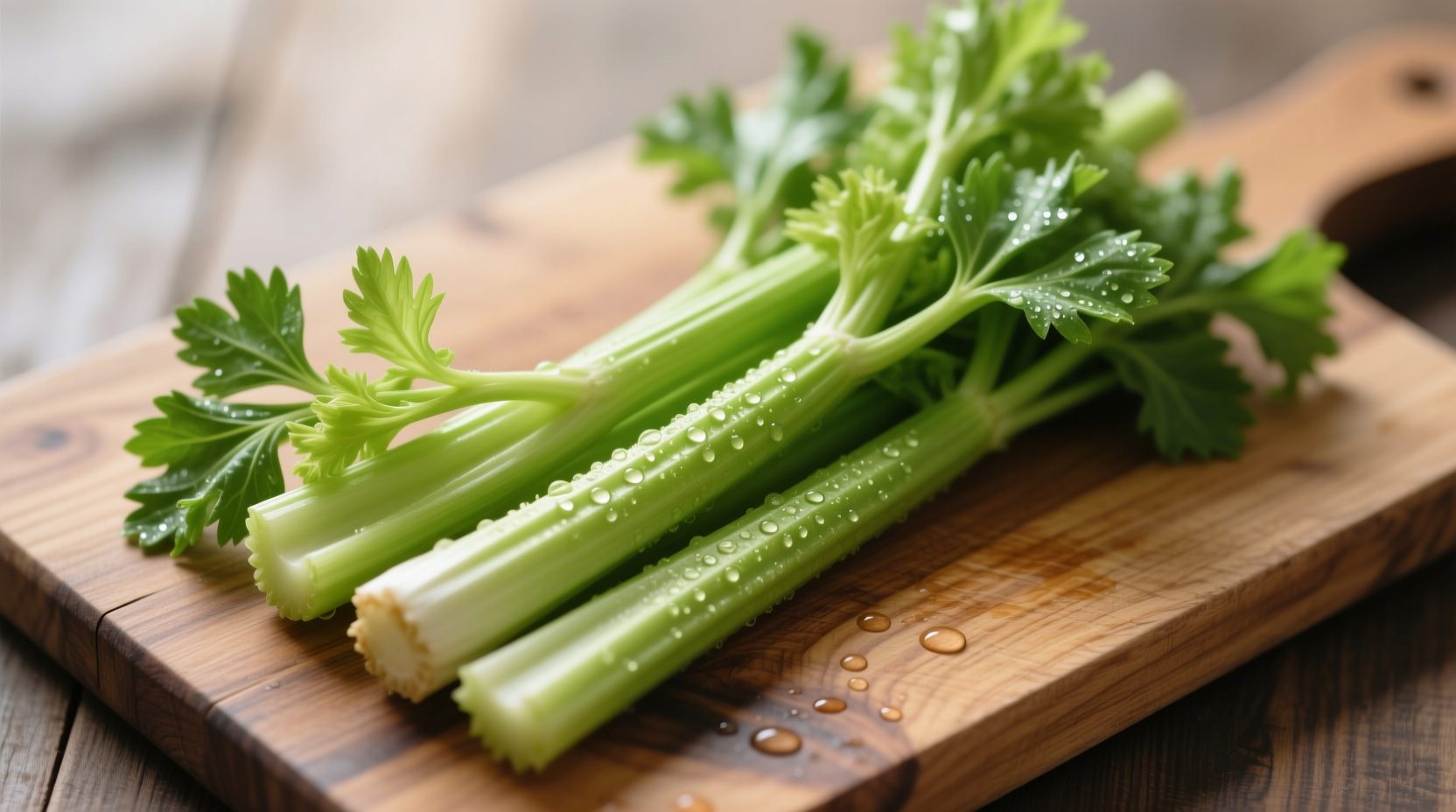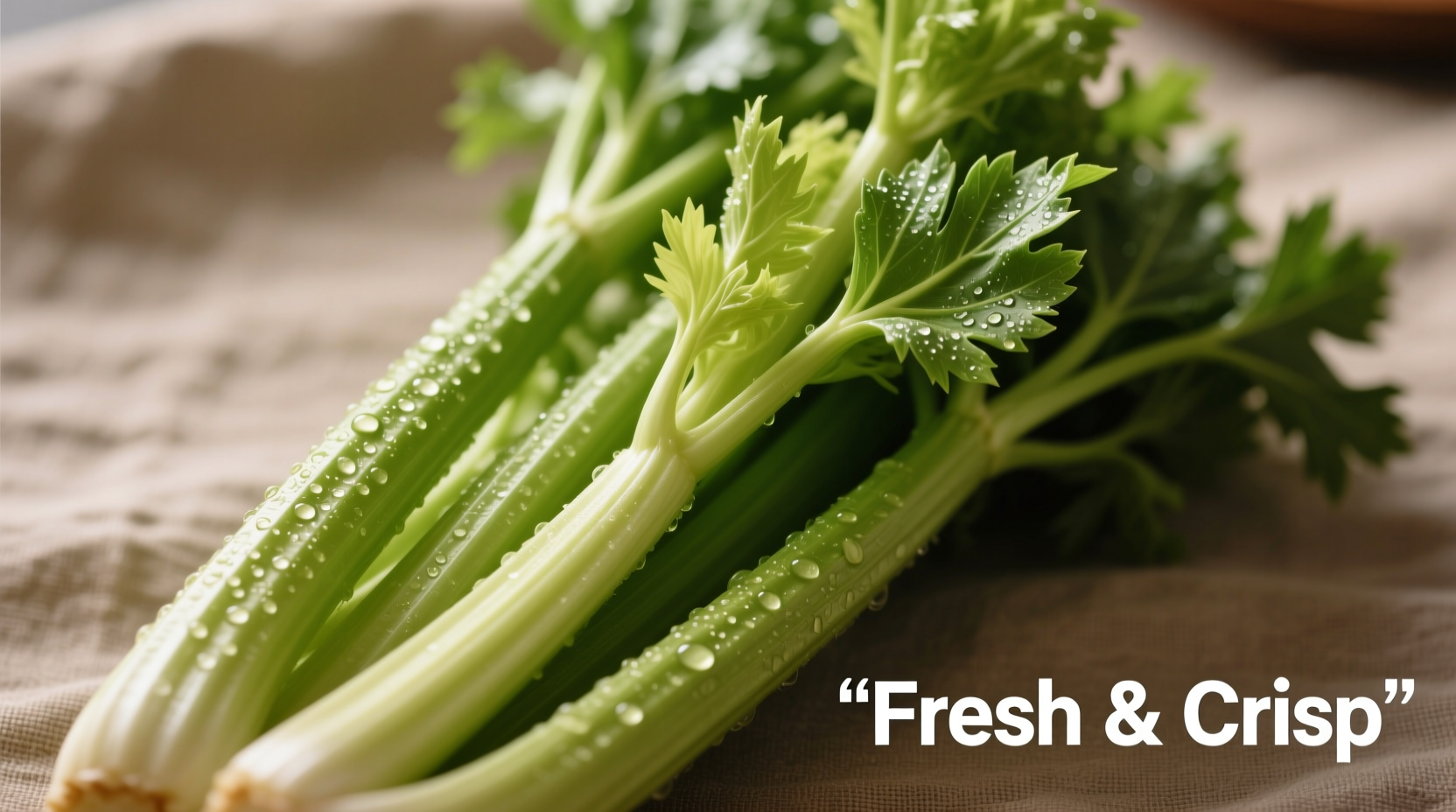Celery stalks provide essential crunch and subtle flavor to dishes while delivering vitamins K and C, potassium, and dietary fiber. One cup contains just 16 calories yet offers 14% of your daily vitamin K needs. Properly stored, they maintain crispness for 2-3 weeks in the refrigerator.
Ever wondered why celery stalks become limp within days or how to maximize their culinary potential? You're not alone. Home cooks and professional chefs alike struggle with properly utilizing this versatile vegetable. This guide reveals science-backed techniques for selecting, storing, and preparing celery stalks that maintain their crisp texture and subtle flavor profile.
Understanding Celery Anatomy and Selection
Celery stalks—technically petioles—are the leaf stems of Apium graveolens. Unlike the common misconception, what we call "stalks" are actually individual ribs comprising the celery head. The inner stalks remain pale and tender, while outer ribs develop more pronounced strings and robust flavor.
When selecting celery at the market, look for these indicators of freshness:
- Vibrant green color without yellowing or browning
- Snappy crispness when bent (shouldn't bend easily)
- Moist, unblemished ends without dryness
- Leaves that remain bright green (if attached)
| Celery Component | Texture | Flavor Profile | Best Culinary Uses |
|---|---|---|---|
| Inner Stalks | Tender, minimal strings | Mild, delicate | Salads, garnishes, raw applications |
| Outer Stalks | Firmer, more fibrous | Bolder, earthier | Soups, stocks, braises |
| Leaves | Delicate, herb-like | Concentrated celery flavor | Finishing garnish, herb blends |
Nutritional Powerhouse in Disguise
Despite their high water content (95%), celery stalks deliver meaningful nutrition. According to USDA FoodData Central, one cup (101g) of chopped celery provides:
- 16 calories
- 14% of daily vitamin K
- 5% of daily vitamin C
- 3% of daily potassium
- 1.6g dietary fiber
The stringy vascular bundles contain valuable insoluble fiber that supports digestive health. Research published in the Journal of Agricultural and Food Chemistry confirms celery's apigenin content demonstrates anti-inflammatory properties. For maximum nutrient retention, consume celery raw or lightly cooked—prolonged boiling leaches water-soluble vitamins.

Mastering Storage Techniques for Longevity
Improper storage causes celery to wilt within days. The key to maintaining crispness lies in moisture control. University of California Cooperative Extension research shows these storage methods extend freshness:
Refrigerator Method: Wrap stalks tightly in aluminum foil, which allows ethylene gas to escape while maintaining humidity. Properly stored, celery maintains crispness for 3-4 weeks—nearly double the standard storage time.
Water Storage Method: Submerge cut stalks in water within an airtight container. Change water every 2-3 days. This technique works particularly well for prepped celery you'll use within a week. The water replenishes moisture lost through transpiration.
Professional Preparation Techniques
How to cut celery stalks properly depends on your culinary application. Chefs distinguish between these preparation styles:
- Mirepoix cut (1/4 inch): Uniform small dice for soups and sauces that dissolve during cooking
- Julienne (matchstick): For stir-fries where texture matters
- Diagonal slices: Increases surface area for better flavor absorption in braises
Removing strings from celery stalks requires precision. Rather than using a peeler (which removes too much flesh), insert a vegetable peeler at the base end and pull upward gently. The strings will gather and lift away while preserving maximum edible portion.
Culinary Applications Beyond Soup
Celery stalks excel in applications beyond the traditional mirepoix. Consider these professional techniques:
Raw Applications: Soak cut celery in ice water for 20 minutes before serving to enhance crispness. Add lemon juice to prevent browning during extended presentation.
Cooked Applications: When making stocks, include both inner and outer stalks—the fibrous outer ribs contribute more flavor compounds while inner ribs provide delicate sweetness. For cream soups, sweat celery slowly over low heat to develop natural sugars without browning.
Unexpected Uses: Blend celery leaves into pesto for herbal complexity. Use hollowed stalks as edible serving vessels for shrimp cocktail or dips. Dehydrate outer ribs to create celery salt with intensified flavor.
Avoiding Common Preparation Mistakes
Even experienced cooks make these celery preparation errors:
- Discarding leaves: Celery leaves contain concentrated flavor—use like parsley in finishing dishes
- Overcooking: Celery loses texture and turns mushy after 15 minutes of simmering
- Improper washing: Always wash celery under running water while rubbing stalks—dirt hides in crevices
- Storing with ethylene producers: Keep away from apples and bananas which accelerate wilting
Understanding these scenario limitations helps determine when celery stalks work best. For cold applications requiring crisp texture, inner stalks outperform outer ribs. In long-cooked dishes, the fibrous outer ribs actually provide better flavor extraction despite their tougher raw texture.
Seasonal Availability and Substitutions
Celery grows year-round in California and Michigan, with peak season from May through October. When unavailable, consider these substitutions based on your recipe's requirements:
- For crunch: Jicama or cucumber (peeled)
- For flavor base: Celery root (celeriac) or fennel bulb
- For raw applications: Bunching onions or radish slices
Remember that no substitute perfectly replicates celery's unique flavor compounds. The compound sedanenolide gives celery its distinctive aroma that's difficult to mimic with other ingredients.











 浙公网安备
33010002000092号
浙公网安备
33010002000092号 浙B2-20120091-4
浙B2-20120091-4